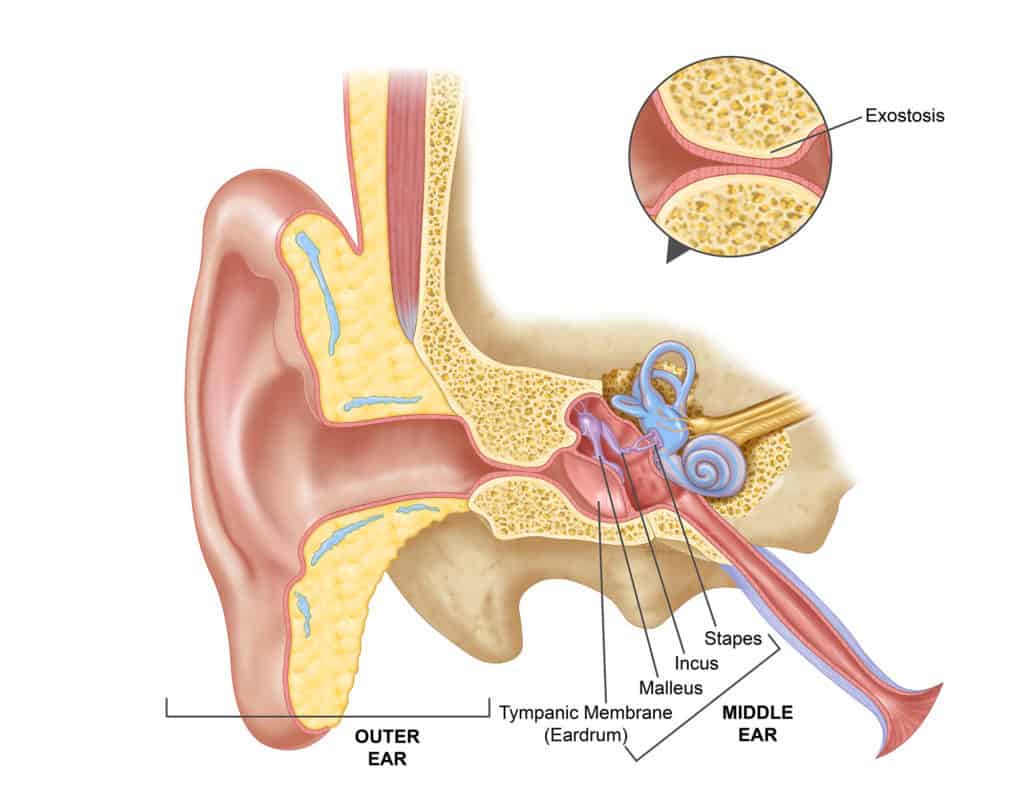What is Exostosis?
Exostoses are slow-growing bony lumps in the ear canal. People who regularly get water in their ears are more likely to get exostoses, which is why it is often called swimmer’s ear or surfer’s ear.

Causes
The most common cause of exostoses is from cold water regularly becoming trapped in the ear. Too much moisture in the ear can occur if the ears are regularly submerged in water when swimming, bathing or from spending time in humid environments, which can lead to infection.
Other factors that can cause infection or blockage include:
- Swimming in dirty water (e.g. spas);
- Using cotton buds to clean the ears;
- Contact with chemicals (e.g. hair dyes or hair sprays);
- Cuts or abrasions in the ear canal; and
- Other skin conditions (e.g eczema).
Symptoms
Common symptoms of exostoses include:
- Itching;
- Pain;
- A blocked sensation in the ear;
- Hearing loss;
- Pus or discharge from the ear; and
- Fever or pain around the ear or in the neck.
Prevention
The best way to prevent exostoses is to use swim plugs whenever your ears are exposed to water.
Using cotton buds inside the ear can also increase the risk of exostoses. Ears are self-cleaning and most of us do not need to remove wax from our ears at all – at least until the wax migrates to a point where you can easily wipe it away with a flannel or tissue.
Treatment
If the exostoses grow to obscure the ear canal, surgery may be required. If left untreated, infection can spread and can cause some hearing loss. Surgery usually requires an overnight stay and two weeks off work is recommended.
During surgery, a small incision is made behind or in the ear. The exostoses are removed with a small surgical drill. Great care is taken to preserve the skin on the exostoses so it can be used to cover the operated area and reduce the chance of infection.
Follow-up visits are necessary until the area has healed, which usually takes four to eight weeks. Care should be taken to stop water from getting in the ear while healing.
